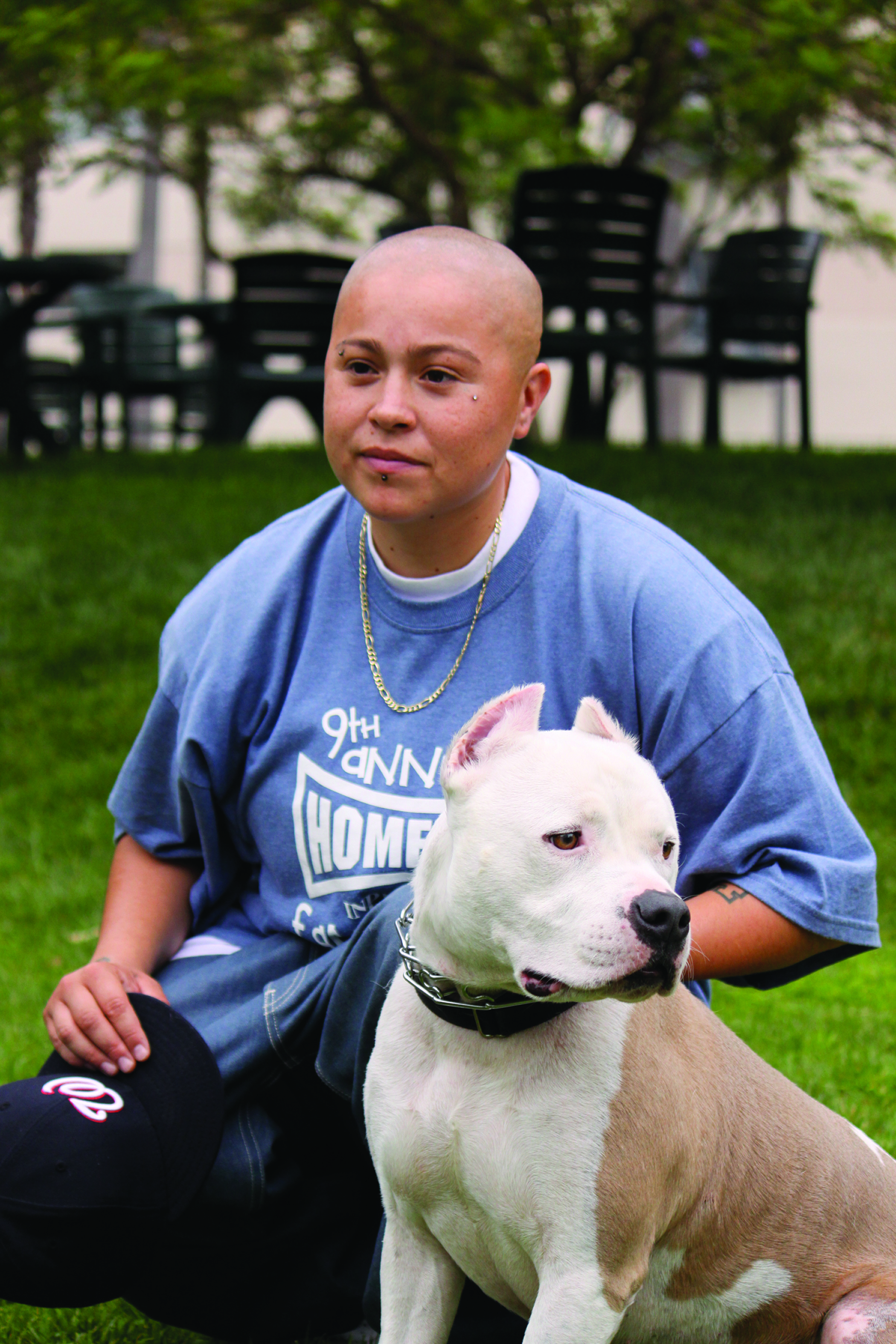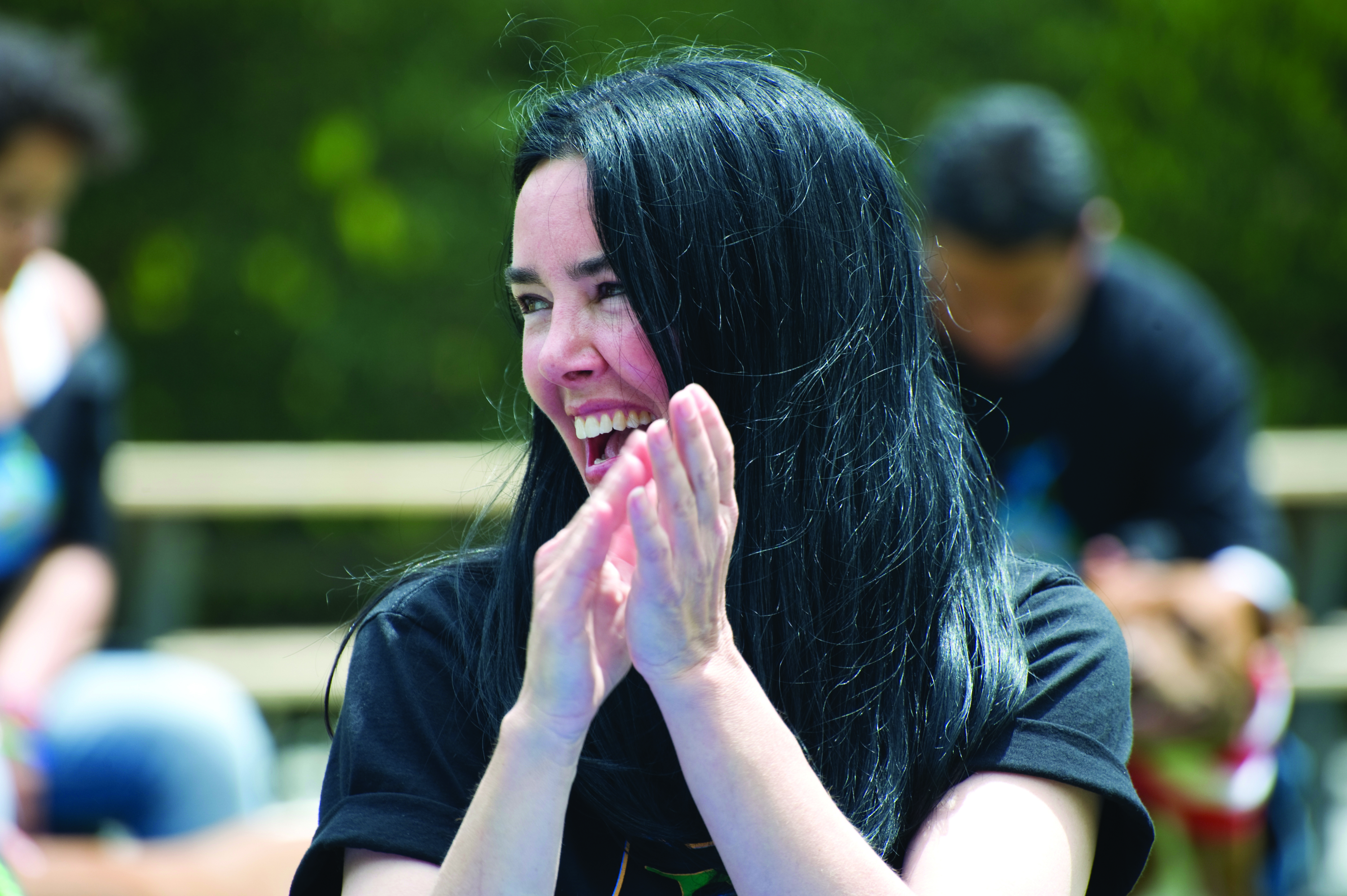Miriam Krinsky believes that, in order to change a young life in a positive way, threats don’t work. Teens need solutions, not fear, she says, and intervention programs for teens like those featured on the A&E Network’s controversial series “Beyond Scared Straight” only provide fear.
Without “filling the void in that person’s life with a positive solution, you’re not going to be able to address the root causes,” said Krinsky, a policy consultant on youth violence prevention and juvenile justice issues for The California Endowment and a lecturer at the University of California Los Angeles’ School of Public Affairs.
 “Many who end up in the [juvenile] justice system … have challenges in their home life,” Krinsky said. “They often turn to drugs or gangs as an outlet. … And if you really want to change that individual’s behavior and their inclination to engage in criminal activity, you have to try and look for a lasting remedy.” In Krinsky’s opinion, Scared Straight-style programs don’t do that.
“Many who end up in the [juvenile] justice system … have challenges in their home life,” Krinsky said. “They often turn to drugs or gangs as an outlet. … And if you really want to change that individual’s behavior and their inclination to engage in criminal activity, you have to try and look for a lasting remedy.” In Krinsky’s opinion, Scared Straight-style programs don’t do that.
For the third season in a row, “Beyond Scared Straight” is disregarding experts such as Krinksy and even the U.S. Justice Department, which discourages the use of the so-called prevention methods the show highlights.
The series is based on the Oscar- and Emmy-winning late-’70s film “Scared Straight!” but modernized to fit in with the current crop of reality television shows. As in the original movie, the new show follows kids who’ve gotten into some trouble and who are shown prison life firsthand and made to interact with inmates intent on frightening the kids away from a life of crime. Most episodes include scenes of prisoners screaming at the teens in the program, threatening them, and trying to prove to the kids that they aren’t as tough as they think they are.
“Scared Straight was a popular form of punishment, so to speak, for youth, especially in the ’70s and ’80s,” said Oscar Githua, a forensic psychologist with experience in the Los Angeles County juvenile justice system. “People thought that maybe if we scare the crap out of kids they aren’t going to go back to doing what we don’t want them to do.”
Instead, Githua said, kids graduating from such programs weren’t behaving the way the adults thought they would. Among Scared Straight participants, recidivism rates, rather than declining as expected, were actually increasing.
“Look, let’s be honest,” Githua said. “If we are thinking from a statistical point of view, yeah, in the interim, for a couple of weeks or months, that kid isn’t going to get into trouble because he’s going to have that visceral reaction to knowing the consequences of being in trouble. But then you’re leaving them in the same neighborhoods they came from. They have the same way of thinking. You’re not changing any of that. … So they’re just going to revert to that,” he continued. “Punishment no longer serves as a deterrent.”
To have a lasting effect, Krinsky said, the focus of a prevention program should be on the individual. “[Y]ou can’t simply threaten them out of it.,” she said. “You can’t just change their behavior; you have to address the root cause. And the Scared Straight programs just don’t do that. They may have a momentary impact, but when that juvenile brain goes back to its impulsive behavior, if you haven’t changed the positive elements, that momentary impact will have vanished.”
In fact, research shows that Scared Straight is not only ineffective, it actually increases the likelihood kids will commit crimes. Some 28 percent of participants in Scared Straight-style programs walk away from the experience more likely to offend — not less likely — according to a well-respected 2003 study that analyzed nine such programs.
The authors of the study, published in The Campbell Collaboration Reviews of Intervention and Policy Evaluations, conclude Scared Straight-style programs “are likely to have a harmful effect and increase delinquency relative to doing nothing at all to the same youths.”
Written by Anthony Petrosino, Carolyn Turpin-Petrosino and John Buehler, the report urges agencies that use such programs to “rigorously evaluate them not only to ensure that they are doing what they purport to do (prevent crime) — but at the very least [to ensure] they do not cause more harm than good to the very citizens they pledge to protect.”
Krinsky, who spent 15 years as a federal prosecutor, said that for many of the kids she encounters who grow up surrounded by gangs, prison may not be much of a threat anyway.
“[Prison] is a bed; it’s a meal,” Krinksy said. “And frankly for many of them, it’s where a lot of their homies are. Often they find that it’s a chance to see their siblings. … If that’s true, it’s not all that bad for them. It’s not necessarily the kind of threat that those of us who haven’t lived these kinds of circumstances presume it to be.”
What’s needed, Krinsky said, are programs that motivate rather than threaten, that address the teen’s underlying problems — poverty, an abusive family, or a neighborhood in which gang membership is the rule and not the exception.
“So, things like youth courts,” she suggested, “where the youth are empowered to make decisions about each other and also see peer-to-peer how they can behave differently, or other kinds of behavior modification programs that look at how to achieve better success in school — in my mind, those are the kinds of programs that I think have been able to make a difference. And, unfortunately, there aren’t a lot of them out there, and there aren’t a lot of resources.”
Githua says one-size-fits-all intervention programs like Scared Straight don’t work because every kid has different circumstances driving his or her behavior. He cites the Blueprints Model Programs from the Center for Study and Prevention of Violence (CSPV) at the University of Colorado Boulder, which identifies the “gold standard” programs that show strong evidence of a sustained, positive effect on youth. (See sidebar: Identifying Effective Prevention Programs).
To date, only 11 programs examined by CSPV have met the Blueprints Model standards, although they admit there are likely many more high-quality programs they have not yet identified.
“You are really trying to understand the youth — not to become buddy-buddy with them but to really try to target their areas of need,” Githua said. And a targeted intervention program would be “more productive than Scared Straight any day of the week.”
Of course, building an individualized program for every young person is impossible, but, Githua said, kids could be banded together “in terms of kids who have similar risk levels — put low-risk together and high-risk together — and then target those interventions to the level of risk.” Monitoring the teens’ progress is critical, he added. “We have measures that actually measure how well they are doing. Are their attitudes changing toward society, toward what they have done? And this way you are going to have a better outcome.”
One violence prevention program finding success with a targeted demographic (although it has not been evaluated by the Blueprints Model) is Project Unleashed in Los Angeles, which pairs former gang members — most often males between 15 and 19 years old — with rescued pit bulls. The program is in the process of expanding to other cities.

“I’m asking [the kids] to help rehabilitate these dogs and help them become more adoptable,” said Alicia Stevenson (pictured right), the program’s founder.
Stevenson said there is a strong parallel between the psychology of gangs and dog packs, so Project Unleashed puts a heavy focus on helping teens separate their identity from their gang.
“[W]e help them discover who they really are as an individual instead of just seeing this pack of guys [the gang] who all dress the same, look the same, move the same,” she said.
Keeping kids free of a life of crime is a noble goal, one shared by Scared Straight programs. But to be successful in changing a child’s life, fear of the consequences isn’t enough, Krinsky asserted. Kids must be given a positive influence and shown that they have control over the choices they make.
“Behavior modification requires the understanding that this isn’t the only path that they can be on,” Krinsky said. “A lot of people I’ve seen who have changed, when I ask them how they did it, inevitably they will say that someone or something had a positive influence on them. ‘Somebody else believed in me; somebody else believed I could do something with my life. It’s not the week I spent in jail or the year I spent in jail. Or the cop who told me what could happen if I didn’t turn myself around. It was the positive influence that made the difference.’”
Ryan Schill is the Assistan Editor. He can be reached at rschill@youthtoday.org.































